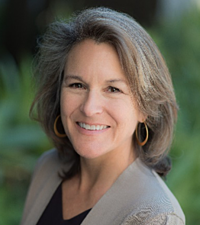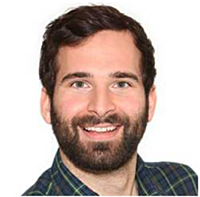During this CHE EDC Strategies Partnership webinar, Drs. Tracey Woodruff and Dimitri Abrahamsson presented findings from their new publication, “Suspect Screening, Prioritization, and Confirmation of Environmental Chemicals in Maternal-Newborn Pairs from San Francisco.” Non-targeted analysis and suspect screening have enabled researchers to screen biological samples for a very broad spectrum of chemicals that would previously remain undetected with conventional targeted techniques. Co-investigators of this new study analyzed 30 matched maternal and cord blood samples (n total = 60) from pregnant women in San Francisco and screened them using our non-targeted analysis workflow. The investigators tentatively identified 55 compounds that appeared to not have been previously reported in the literature. The majority of these compounds have limited to no information about their sources or uses. Examples include (i) 1-(1-acetyl-2,2,6,6-tetramethylpiperidin-4-yl)-3-dodecylpyrrolidine-2,5-dione (known high production volume chemical) (ii) methyl perfluoroundecanoate and 2-perfluorooctyl ethanoic acid (two PFAS compounds); and (iii) Sumilizer GA 80 (plasticizer). Drs. Woodruff and Abrahamsson closed the talk with a discussion on the potential public health implications of the study’s results and future policy and research opportunities.
This webinar is one in a monthly series sponsored by the EDC Strategies Partnership. The EDC Strategies Partnership is co-chaired by Sharyle Patton (Commonweal Biomonitoring Resource Center), Jerry Heindel (Commonweal HEEDS, Healthy Environment and Endocrine Disruptor Strategies), Genon Jensen (HEAL, Health and Environment Alliance), Sarah Howard (HEEDS and the Commonweal Diabetes and Environment Program), and Hannah Donart (Commonweal CHE, Collaborative on Health and the Environment). To see a full list of past calls and webinars related to EDCs and listen to or view recordings, please visit our partnership page. For updates and more information on upcoming webinars, sign up for our HEEDS, HEAL, and CHE newsletters!
This webinar was moderated by Sharyle Patton, Director of the Commonweal Biomonitoring Resource Center. It lasted for 45 minutes and was recorded for our call and webinar archive.
Featured Speakers
 Tracey Woodruff, PhD, MPH is the Director of and Alison S. Carlson Endowed Professor for PRHE and is a Professor in the UCSF Department of Obstetrics, Gynecology and Reproductive Sciences and the Philip R. Lee Institute for Health Policy Studies. She is also the Director of a newly awarded NIEHS Environmental Health Core Center grant, the Environmental Research and Translation for Health (EaRTH) Center at UCSF. She is a recognized expert on environmental pollution exposures and impacts on health, with a focus on pregnancy, infancy and childhood, and her innovations in translating and communicating scientific findings for clinical and policy audiences. She has authored numerous scientific publications and book chapters, and has been quoted widely in the press, including USA Today, the San Francisco Chronicle and The New York Times. Before joining UCSF, Dr. Woodruff was a senior scientist and policy advisor for the U.S. EPA’s Office of Policy. She was appointed by the governor of California in 2012 to the Science Advisory Board of the Developmental and Reproductive Toxicant (DART) Identification Committee.
Tracey Woodruff, PhD, MPH is the Director of and Alison S. Carlson Endowed Professor for PRHE and is a Professor in the UCSF Department of Obstetrics, Gynecology and Reproductive Sciences and the Philip R. Lee Institute for Health Policy Studies. She is also the Director of a newly awarded NIEHS Environmental Health Core Center grant, the Environmental Research and Translation for Health (EaRTH) Center at UCSF. She is a recognized expert on environmental pollution exposures and impacts on health, with a focus on pregnancy, infancy and childhood, and her innovations in translating and communicating scientific findings for clinical and policy audiences. She has authored numerous scientific publications and book chapters, and has been quoted widely in the press, including USA Today, the San Francisco Chronicle and The New York Times. Before joining UCSF, Dr. Woodruff was a senior scientist and policy advisor for the U.S. EPA’s Office of Policy. She was appointed by the governor of California in 2012 to the Science Advisory Board of the Developmental and Reproductive Toxicant (DART) Identification Committee.
 Dimitri Abrahamsson, PhD, MSc is an environmental chemist and a postdoctoral scholar at PRHE. His research focuses on non-targeted analysis of biological and environmental samples and characterizing human exposures to environmental chemicals. His work aims at characterizing the human exposome and understanding the role of environmental chemicals in the development of human disease. Before joining PRHE, he worked as a postdoctoral researcher at U.S. EPA’s National Exposure Research Laboratory in North Carolina. He did his PhD in Environmental Chemistry at Stockholm University in Sweden where he studied the partitioning and persistence of volatile methylsiloxanes in the environment.
Dimitri Abrahamsson, PhD, MSc is an environmental chemist and a postdoctoral scholar at PRHE. His research focuses on non-targeted analysis of biological and environmental samples and characterizing human exposures to environmental chemicals. His work aims at characterizing the human exposome and understanding the role of environmental chemicals in the development of human disease. Before joining PRHE, he worked as a postdoctoral researcher at U.S. EPA’s National Exposure Research Laboratory in North Carolina. He did his PhD in Environmental Chemistry at Stockholm University in Sweden where he studied the partitioning and persistence of volatile methylsiloxanes in the environment.
